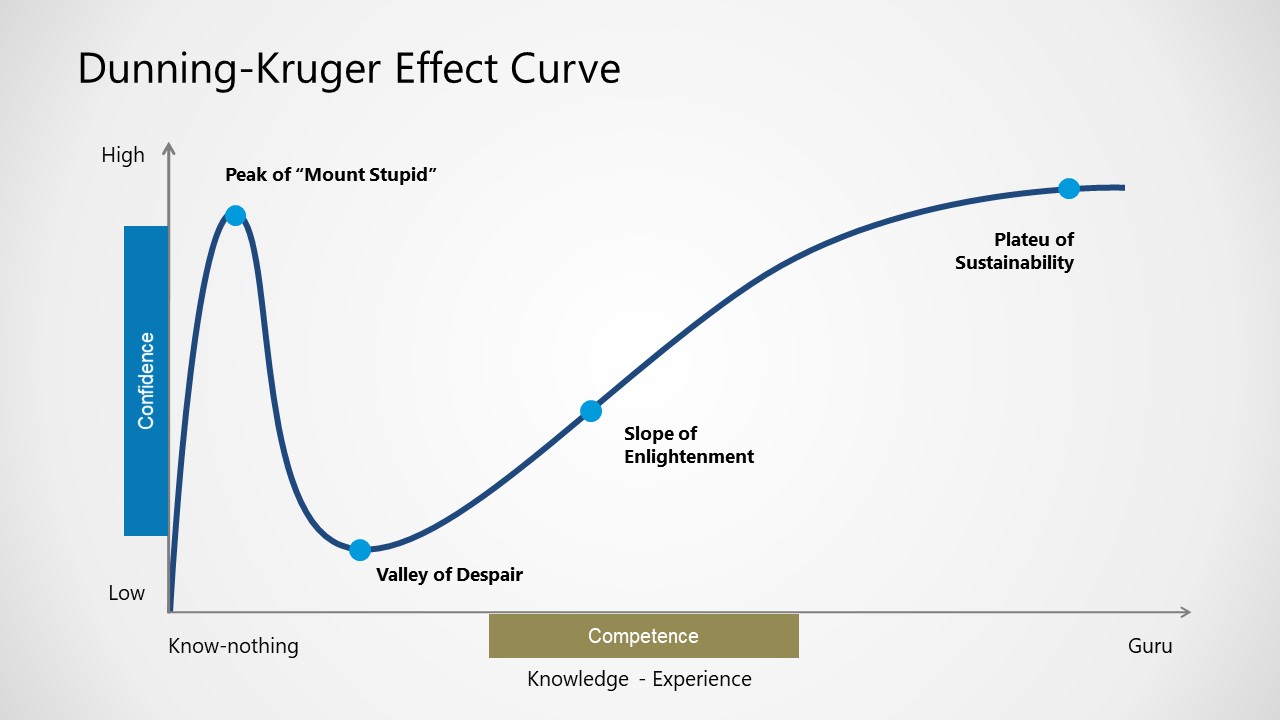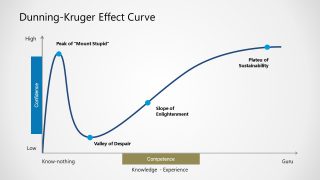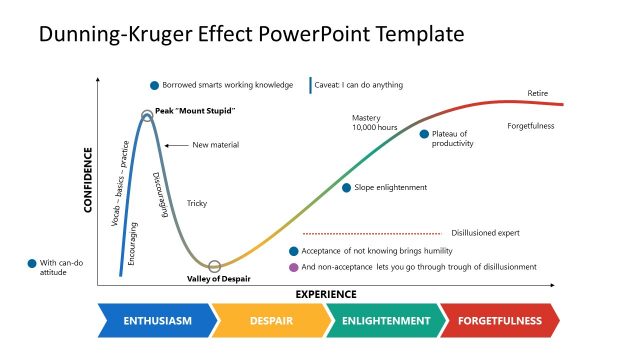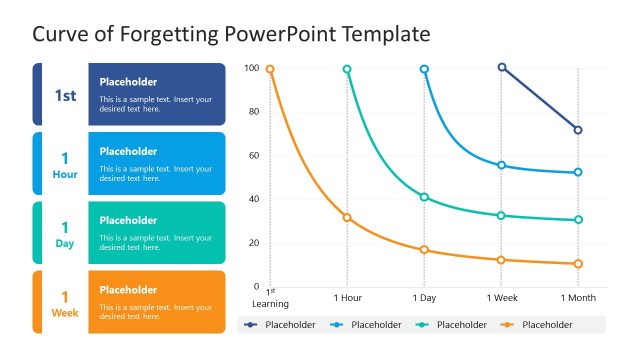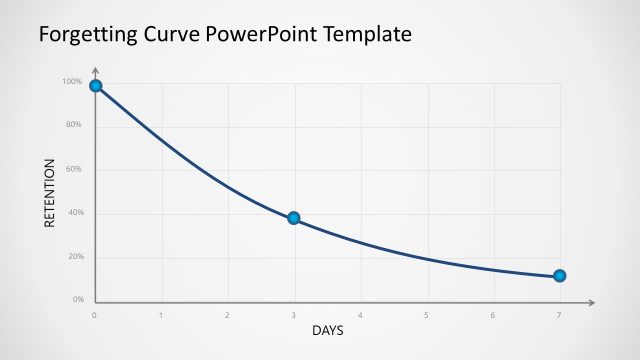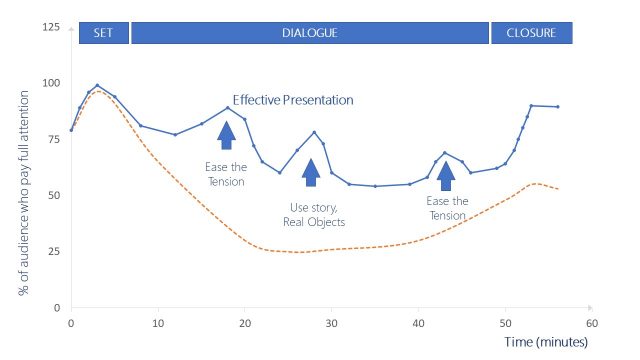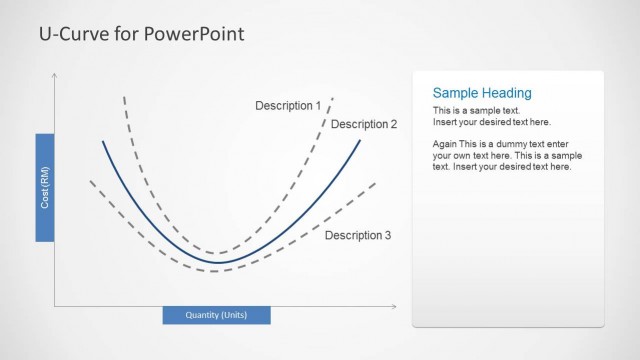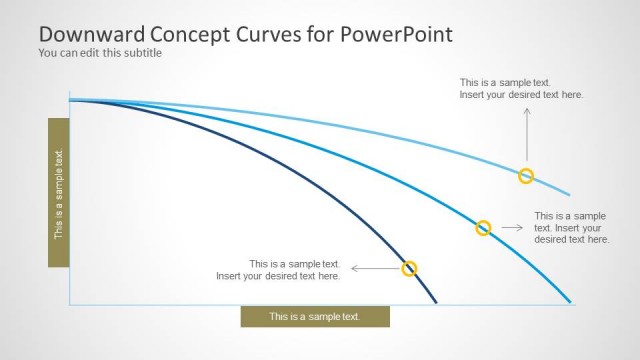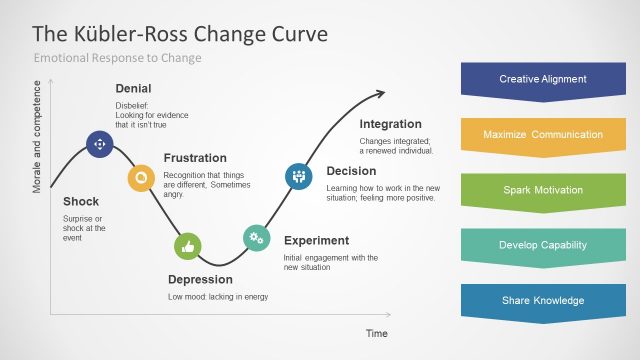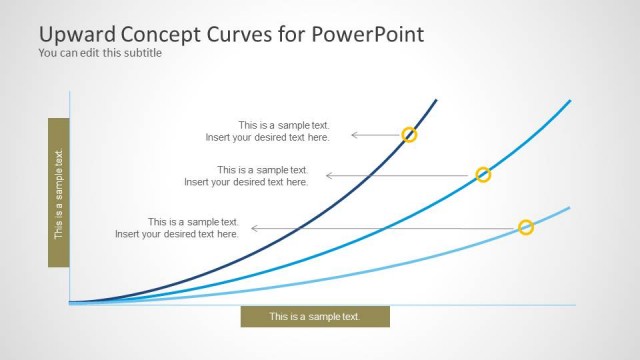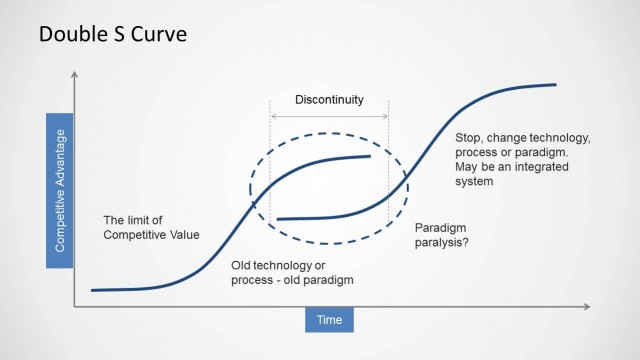Dunning-Kruger Effect Curve for PowerPoint
The Dunning-Kruger Effect Curve for PowerPoint is a one-slide graph template. This template is designed to display the journey of knowledge and confidence. It is named after social psychologists, David Dunning and Justin Kruger. This psychology concept explaining a type of cognitive bias that lets people overestimate their abilities. Especially in areas where they have little or no experience. The purpose of Dunning-Kruger curve is to understand people’s inability to recognize their lack of experience. Because a lack of knowledge leads to not knowing what are you talking about and confidence makes it impossible to realize it.
The graphic shows ability curve overconfidence and competency. It shows beginners, with minimum knowledge get an initial boost of confidence when exposed to new skills, tools, or terms to talk about. It is called the peak of “mount stupid”. However, as learner continues to gain knowledge, the confidence levels began to drop i.e. “Valley of despair”. Because the more you know, you realize how much you don’t know. From here onwards, the slope of confidence and competence move from slope of enlightenment to plateau of sustainability.
The Dunning-Kruger Effect Curve for PowerPoint could be applied in various industry presentations to explain cognitive bias. For example, recognizing and improving their own performance at work. Likewise, the Dunning-Kruger Effect has been used in machine learning and artificial intelligence for basics of learning. Such as hype-cycle for the democratization of artificial intelligence. The editable PowerPoint graph will let users change text or point on curve from formatting menu. Hence users can make changes in text to explain. Alternatively, check our collection of curved PowerPoint templates.
